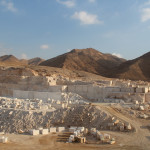Regenerative aquatic foods can be a win win for human and planetary health
Content
- The Potential Risks of Regenerative Finance
- Next-Generation Technologies Are Rapidly Boosting Geothermal Energy’s Commercial…
- Conventional & regenerative economic systems
- Two examples on how ReFi can touch people’s lives
- Reimagining Finance for a Better World: How Regenerative Finance (ReFi) is Leading the Way
- Key Features of a ReFi Solution Development
- Leveraging Cutting-Edge Technologies to Build Eco-Friendly and Regenerative Financial Structures
- Reasons to Save Money (Plus Tips to Secure Your Financial Future)
For example, a large majority of the 300M tons of plastic waste produced yearly by industry could instead be used, after some processing, for new products like clothing and building materials. The overall goal is to shift the global economy from being degenerative or sustainable to being regenerative so that shared value can be created. Part of this shift involves shifting from endless accumulation and throwaway culture to a circular economy. Well, we simply cannot fix the problems facing society today, in all https://www.xcritical.com/ aspects, as long as a flawed financial system is in place.
The Potential Risks of Regenerative Finance
Its main objective is to align financial practices with the goals of environmental conservation and social equity. ReFi aims to channel capital into projects that restore natural resources, enhance biodiversity, and promote social well-being, ensuring that financial activities contribute positively to the world. DeFi development aims to recreate traditional financial systems in a decentralized manner. It eliminates intermediaries like banks and brokers, offering financial services through smart contract development on blockchain platforms. DeFi regenerative finance includes services such as staking platform development, vesting smart contracts creation, and yield farming solutions development, all without relying on traditional financial institutions.
Next-Generation Technologies Are Rapidly Boosting Geothermal Energy’s Commercial…
Regenerative finance leverages money as a tool for solving systemic issues, as well as community and environmental problems. It uses decentralized finance (DeFi) and blockchain technology to assist in reversing the damaging effects of industrialization, along with systemic financial imbalances. Web3 technologies could be leveraged to support the improvement of ecological and social issues, be it deforestation, food scarcity, or something else. ReFi actively encourages investment in regenerative projects, which then leads to the regenerative movement spreading globally until a critical tipping point is reached. Everything in a public blockchain is recorded in a transparent way, ensuring all contributions are being tracked for all to see how impactful those investments truly are.
Conventional & regenerative economic systems
The creation of more environmentally friendly and sustainable methods and products can be influenced by this creative attitude, which can change how entire industries work. Triodos Bank is an outstanding example of a banking institution that values ethics in its operations. Triodos Bank has been helpful in channeling resources toward initiatives and groups with beneficial influence on the population, the ecosystem, and culture as part of its devotion to sustainability and the welfare of society. They participate in funding renewable energy campaigns, organic farming, and social organizations.
Two examples on how ReFi can touch people’s lives
Blockchains directly connect users and developers around the world with each other, allowing them to exchange goods, services, information, and digital assets. With the help of blockchain technology, we can lay the foundation for systems that are open, fair, and democratized. ReFi makes use of blockchain technology and deploys Web 3.0 services such as smart contracts, crypto wallets, green DAOs, impact tokens etc. to pursue its goal of sustaianable growth. First and foremost, ReFi fosters sustainable growth that is crucial for the future of humanity. A combination of finance, sustainability, regeneration, and social responsibility, regenerative finance (ReFi) seeks to achieve financial and social benefits for everyone as it imitates the regenerative model of nature. The common denominator in the regenerative financing structures outlined aboveis that they all provide systemic solutions to systemic problems.
Reimagining Finance for a Better World: How Regenerative Finance (ReFi) is Leading the Way
What is more, the liquidity needs of capital allocators are misaligned with climate finance’s long-term horizon. We have to take the long-term view, and even the most patient capital is not that patient. Erika D. Williams is the former vice president of integrated capital at RSF Social Finance, a lending, giving, and investing innovator based in San Francisco. Equitable deployment means rebalancing the economic scales by not only expanding the universe of people funded, but also reforming the funding process to eliminate structural biases and invite stakeholders into decision-making roles. The development of Regenerative Finance (ReFi) has great exponents in the blockchain ecosystem.
Key Features of a ReFi Solution Development
Addressing the current crises in depth means designing alternatives to our systems of culture of domination with regenerative systems that value care and nature. Finally, the last principle indicates that Regenerative Finance (ReFi) seeks to maintain a healthy balance between all parties. An essential point to keep, not only the system in operation, but also so that human, social, natural and physical capital develops in the same way. Therefore, while inclusivity may be morally desirable, empowered participation is a non-negotiable quality within ReFi.
Crowdfunding platforms have also democratized access to finance and opened up new opportunities for financing sustainability initiatives. Technology will continue to play a crucial role in the development of regenerative finance, driving the transition towards a more sustainable financial system. The future of regenerative finance looks promising as it gains traction among individuals, institutions, and governments. With all these driving forces, the potential for growth in the regenerative finance market is significant and the trend is expected to continue in the coming years. Now is the time to explore the opportunities in regenerative finance and join the movement towards a better future for all. Governments’ role in advancing the principles of regenerative finance and promoting sustainability.
Additionally, education and awareness can break down barriers to entry, making regenerative finance more accessible and encouraging more people to invest in sustainable initiatives. Furthermore, education drives innovation in the field, promoting progress and advancing its principles. Ultimately, educating the masses about regenerative finance helps build a more resilient and sustainable future, benefiting future generations.
Several real-life case stories are also presented to illustrate the successful applications of green technologies by organizations and individuals to mitigate the effects of climate change and achieve sustainability goals. In sum, the overarching goal of this paper is to demonstrate how harnessing the power of green and regenerative finance and green fintech is crucial in ensuring a sustainable future for all. Regenerative Finance is the process of using various forms of capital to drive systematic, sustainable, and positive change for all stakeholders. ReFi aims to direct investment toward regenerative businesses in order to accelerate their growth and help them scale up their impact.
Visual tools, like savings trackers or apps that show your progress, can also help keep you focused. Whenever you receive extra money, such as a tax refund, work bonus, or birthday gift, consider putting a portion of it (or all of it) into your savings. Over time, these small contributions will add up, and you won’t feel the financial pinch as much.
Organizations like Funders for Regenerative Agriculture and RSF Social Finance are trailblazers when it comes to combining ReFi with ReAg. ReFi investors actively engage with the projects they fund, offering financial support, expertise, and mentorship. This leads to minorities and marginalized groups turning to ReFi, and using it as a tool for innovation and growth, often at a faster pace than people from communities with more privileged access to resources.
Eventually, the concept grew from an idea to an actual framework for banking institutions. Read part II follow-up of this post for a deep dive on regenerative finance and tokenomics design. When as many interconnected and interrelated causes and effects are diagramed and mapped out, capital can be deployed more fairly. Overbearing repayment terms and collateral requirements extracting vital resources from communities can be replaced, and exclusionary credit standards can be revised.
- ReFi takes a holistic approach to finance by focusing on a wider set of Environmental, Social, and Governance(ESG) investment criteria to determine investment worthiness.
- Collaborating with environmental NGOs to identify high-impact projects and with technology firms to provide innovative solutions for funding and managing these projects enhances overall effectiveness.
- The use of data and analytics also helps these institutions make informed investment decisions and measure their impact.
- These computer programs can run and maintain different financial products such as single and joint bank accounts, lending services, or currency exchanges.
- One of the core instruments in doing that is redesigning money itself in a way that writes a new story for what it actually means to be an integral human being living on a shared planet.
These ecosystems facilitate the flow of capital into projects that restore natural resources, enhance biodiversity, and promote social equity. By integrating blockchain technology, ReFi ensures that these processes are transparent, verifiable, and efficient, thereby building trust among stakeholders and driving meaningful change. Individuals can make investments directly in initiatives involving sustainability, renewable energy, and eco-friendly efforts through decentralized platforms, as well as blockchain technology. Web3 guarantees that funds go directly to environmentally beneficial projects and increases access to green investment opportunities by eliminating middlemen.
In contrast, regenerative finance prioritizes sustainability, social responsibility, and environmental conservation, and focuses on creating financial systems that benefit both people and the planet. It invests in initiatives such as renewable energy and sustainable agriculture that promote environmental conservation and sustainability. Additionally, CDFIs are embracing technology to enhance regenerative finance (ReFi). They use digital platforms to connect borrowers and lenders and provide financial services and information, increasing their reach and impact. Data and analytics also help CDFIs make informed investment decisions and measure their investments’ impact. CDFIs play a vital role in advancing a more sustainable financial system, democratizing access to finance, and promoting positive social and environmental impact.
A new financial movement has been growing over the past decade that takes into account living systems, communities, and the environment. After all, all wealth that exists only does so thanks to the Earth and its abundant resources. All material in this website is intended for illustrative purposes and general information only. It does not constitute financial advice nor does it take into account your investment objectives, financial situation or particular needs.
It strives to eliminate intermediaries, central authority, and barriers to financial services to give customers immediate access. ReFi calls for parameters that extend past economic benefits to measure the lasting sustainability and societal effect of investments. These indicators help make educated judgments and ensure that investments adhere to regenerative concepts. This is crucial not only in redefining money within climate, harmony and justice values but also in activating the kind of regenerative economy that sees “places” as living organisms. In the view of these complex system thinkers, promoting the health of the underlying human network is vastly more important than increasing the volume of economic output (GDP growth) per se. Innovation, entrepreneurship, and capacities are important, but they need to be linked by common-cause values, supported by commonwealth infrastructure, and nourished by cross-scale circulation of money, information, and resources.





